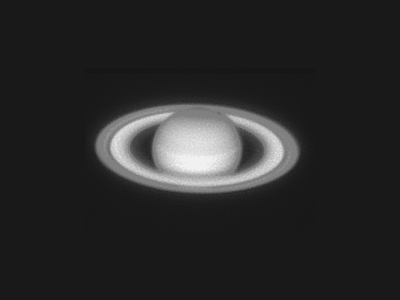 |
 |

|
A New
Year’s Message
From
Alan Holmes
President and Co-Founder of SBIG
December 2001
I want to wish everyone an enjoyable holiday season and a happy new year, and thank all of our customers for making 2001 the best year in SBIG’s history. Remember back to New Year’s Day 1990, when SBIG’s best imaging camera was an ST-4, and most of us were using Hercules or CGI graphics cards? When a hot computer ran at 10 megahertz and had a 20 megabyte hard drive? Computers have advanced by over a factor of a hundred in both metrics over these ten years, but that ST-4 is still being sold. 2002 marks its last production run, since we can no longer get the through-hole electronics parts that comprise it. What I personally find most amazing is we held the price constant, sometimes even lower for brief periods, for 11 years! Back then SBIG had one camera. Now we have a total of 8 distinct cameras in manufacture, along with some complex accessories such as the AO-7 and the spectrograph. We pride ourselves on offering a total solution to a user pursuing CCD imaging. We not only sell the imager, but we also provide excellent software, solve the guiding problem, have a form-fit compatible filter wheel for most of our cameras with custom filters specifically designed for astro-imaging, and sell components for the advanced amateur to pursue photometry and spectroscopy with our equipment. We are proud to have been a part of the significant advances in amateur astronomy over the last 10 years. The images that are being posted on the web and in the popular astronomy magazines that are taken with our products are incredible! Planetary images come to us that look like Hubble shots, with Jupiter images showing detail in the Great Red Spot, and Saturn images showing the Crepe ring and the Encke division. Deep sky color images are also reaching extraordinary levels of detail and resolution, with amateurs attempting the more obscure NGC objects in pursuit of new challenges.
2001 was a productive year at SBIG in new product development. Software Bisque and SBIG introduced the powerful CCDSOFTV5 software package to provide unprecedented capability to the amateur as standard equipment with our cameras, and unparalleled integration with their other software programs such as THE SKY. SBIG introduced the ST-1001, a big chip solution for those users with truly huge scopes or users participating in wide field search programs. The ST-237 was upgraded to 16 bit capability, and an Ethernet remote server box was introduced that breaks the parallel port distance barrier between scope and computer. We introduced a quick disconnect that is a must-have accessory for the STV and ST-237 due to its ease of use in swapping between eyepieces and camera. We had a few false starts – our Super E-finder is held up while I try to get completely round stars out of it (a challenging alignment task) and our auto-focus accessory will emerge in 2002 as part of another accessory. 2002 will be an exciting year as we introduce the USB-based ST-7/8/9/10 cameras, and a host of new accessories. I have a personal passion for improving the resolution of CCD images, and 2002 will reflect that as we introduce an On-Axis tip-tilt mirror guiding accessory for several of our cameras. After many long nights at the telescope I have come to the conclusion that much of the blur in long exposure imaging is either due to fast drive errors, large bubbles of warm air rising off the surrounding terrain, or flowing up the secondary stalk on a Schmidt-Cassegrain telescope. I have found the AO-7 to be indispensible in suppressing the stellar wander due to the drive and local seeing, and have become convinced that On-Axis AO, with its higher degree of correlation between the wander of the object and the guide star, will provide significant improvement. This is the essence of SBIG! Even though no competitor has challenged our AO product, we still spend considerable time and money to make it even better. We know our customers want the best image they can get, and that is our goal. Sometimes that goal is opposed to cheaper, lighter, or easier, but that is the difference between a hobby and a passion!
On a personal note, I get out there and use my telescope a fair amount myself. I have a Celestron 11 inch SCT on a Losmandy G11 mount. Below I post my three most interesting personal results for 2001; my best Ring Nebula image (1.5 arc-second FWHM stars in the raw image), my best Saturn Image (ST-237 at F/20), and a spectrum showing the rotation of Saturn and its rings (ST-7E and SGS). Note the tilt between the solar Fraunhofer lines reflected off the planet and rings, and the comparison Neon line vertically traversing the image. This is due to the Doppler shift of the reflected light off the rotating rings and planet. I used our spectrograph with the new 1800 line per mm grating for this measurement. I am just amazed at what can be done these days using amateur equipment!
Alan
 |
 |

|
Revised: December 23, 2001 04:50:54 PM.
Copyright © 2001 Santa Barbara Instrument Group, Inc. All rights reserved.
Please report any problems with this page directly to the Webmaster